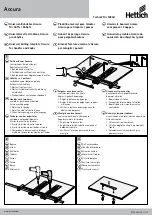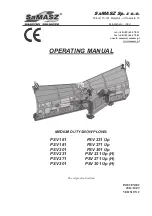
English |
11
Bosch Power Tools
1 609 92A 0KX | (15.5.14)
beams flash rapidly. In this case, bring the measuring tool to
the level position and wait for the self-levelling to take place.
As soon as the measuring tool is within the self-levelling range
of ±5° or ±3° respectively, all laser beams light up continu-
ously again.
In case of ground vibrations or position changes during oper-
ation, the measuring tool is automatically levelled in again. To
avoid errors by moving the measuring tool, check the position
of the laser beams with regard to the reference points upon
re-levelling.
Levelling Accuracy
Influences on Accuracy
The ambient temperature has the greatest influence. Espe-
cially temperature differences occurring from the ground up-
ward can divert the laser beam.
As thermal fluctuation is largest close to the ground, the
measuring tool, if possible, should be mounted on a commer-
cially available tripod and placed in the centre of the working
area.
Apart from exterior influences, device-specific influences
(such as heavy impact or falling down) can lead to deviations.
Therefore, check the accuracy of the measuring tool each
time before starting your work.
Should the measuring tool exceed the maximum deviation
during one of the tests, please have it repaired by a Bosch af-
ter-sales service.
When the levelling accuracy of the horizontal laser beams for
the lateral and longitudinal axis is within the maximum allow-
able deviation, then the levelling accuracy for the plumb
beams (vertical axis) is thus also checked.
Checking the Horizontal Levelling Accuracy of the Lateral
Axis
A free measuring distance of 20 m on a firm surface in front of
a wall is required for the check.
– Mount the measuring tool onto the holder or a tripod, or
place it on a firm and level surface at a distance of 20 m to
the wall. Switch the measuring tool on.
– Direct one of the two lateral laser beams, that run along-
side the lateral axis of the measuring tool, at the wall. Allow
the measuring tool to level in. Mark the centre of the laser
beam on the wall (point
I
).
– Rotate the measuring tool by approx. 180° without chang-
ing its height. Allow it to level in and mark the centre point
of the other lateral laser beam on the wall (point
II
). Take
care that point
II
is as vertical as possible above or below
point
I
.
– The difference
d
of both marked points
I
and
II
on the wall
results in the actual height deviation of the measuring tool
alongside the lateral axis.
On the measuring distance of 2 x 20 m = 40 m, the maximum
allowable deviation is: 40 m x ±0,3 mm/m = ±12 mm.
Thus, the difference
d
between points
I
and
II
may not exceed
12 mm (max.).
Checking the Horizontal Levelling Accuracy of the
Longitudinal Axis
A free measuring distance of 20 m on a firm surface between
two walls A and B is required for the check.
– Mount the measuring tool onto the holder or a tripod, or
place it on a firm and level surface close to wall A. Switch
the measuring tool on.
– Direct the horizontal laser beam, which runs parallel to the
longitudinal axis of the measuring tool, at the close wall A.
Allow the measuring tool to level in. Mark the centre of the
laser beam on the wall (point
I
).
20 m
d
180˚
A
B
20 m
A
B
180˚
OBJ_BUCH-815-003.book Page 11 Thursday, May 15, 2014 10:51 AM












































